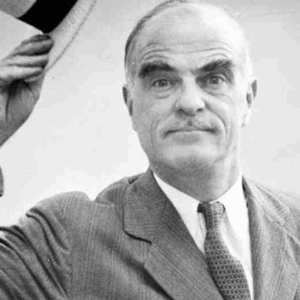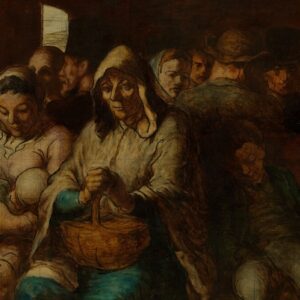
John Barth Deserves a Wider Audience
Happy 90th Birthday to the Author of The Sot-Weed Factor
Today, May 27, 2020, John Barth turns 90. That the man’s made it so far, during such a busy season for the Reaper, may be itself newsworthy. Yet in another sense he’s already a ghost. His halcyon days date back to 1960, and The Sot-Weed Factor—his third novel in five years. Sot-Weed recast colonial America as a savage farce, and so gave a kick-start to that decade’s cultural hijinks. Come ’68, Barth’s fiction turned well-nigh psychedelic, in his story collection Lost in the Funhouse. The title piece bristles with tricks of voice, typology, and more, and it remains his best-known work (if, alas, widely misread). But hardly anyone noticed his most recent fiction, the brief novel Every Third Thought in 2011. Los Angeles Review of Books ran a long encomium; otherwise, neglect was the rule.
As it’s been for many a season. Barth’s earlier accomplishments amount to a watershed for the country’s fiction, a landmark in what’s known as Postmodernism. Since then, however, his career has fallen victim to a misbegotten consensus. When Barth comes up at all, these days, he’s dismissed as someone who shot his bolt by about 1973. That year he won the National Book Award for Chimera, but this honor, goes the argument, was more for Lifetime Achievement. Though barely past 40, the author had lost his Po-mojo. If you ask the naysayers, every book thereafter was at best hubristic overreach and at worst… see George Steiner’s hatchet job on LETTERS, 1979, in The New Yorker.
Over the 80s and 90s, most critical venues joined the attack. Granted, I’m generalizing. William Gass put Barth on the same level as James Joyce, in his Paris Review interview. Letters certainly had its admirers, and in 1983 Frederick Karl made the novel a centerpiece for his authoritative overview, American Fictions. In ‘91, Barth’s novel The Last Voyage of Somebody the Sailor garnered a dream review in the Washington Post—from Angela Carter, no less. For that book the publisher sprang for a tour, and the reading I attended, at Powell’s, was standing room only. The man proved as sharp as in my mid-70s workshops at Johns Hopkins. Yes, I was his student, and besides that I’ve published a couple of write-ups. One was a cry for justice, like this, in an anthology on Dalkey Archive. That press has reissued the entire Barth catalogue.
Still, for the better part of 40 years, applause for this author has gone largely unheard. In the Times Book Review, for instance, the novel Carter so admired took a loud thwacking. Gore Vidal, both in print and on TV, insisted that Barth was “astonishingly boring.” Long and short, the man couldn’t catch a break. His work suffered worse than that of any writer who followed his lead. Unlike, say, Donald Barthelme, Barth became one of those “no one reads anymore.” First Raymond Carver made him look prissy, then David Foster Wallace rendered him unhip.
Now, the buffeting of cultural winds is always a risk. Arthur Miller, one of our greatest playwrights, saw all his later plays trashed—a damning indictment, according to Tony Kushner, of the critical establishment. To me the case of later Barth looks awfully similar. Worse, it obscures the actual zenith of his storytelling.
These novels are messy with the raw materials of 20th-century life. Maryland’s nasty strain of racism, for instance, often comes to light.
That’s right: the peak isn’t the one most people point to. Certainly Barth’s earlier accomplishments remain benchmarks. But while a fiction like “Dunyazadiad,” from Chimera, was a game-changer, that’s a different sort of triumph from simply producing one terrific novel after another. The latter’s no mean feat, either, especially when the run extends into an author’s 60s. In Barth’s case, three later fictions deserve celebration: first LETTERS, then The Tidewater Tales, 1987, and finally Last Voyage.
These dozen years saw other work, as did the years following Last Voyage. Concerning all that, however, I’ll confine myself to two quick observations, both prompted by his selected non-fiction The Friday Book (1984). First, those forty-some pieces include only one brief interview. Nor was this with the prestigious Paris Review; Barth turned them down repeatedly, and when he did at last consent, he cut the talk shorter on every pass. He never liked the Q-&-A, though anyone who’s heard him can attest to his affable smarts, and so he did without the promotional tool most writers depend on. Second, Friday includes his lone defense of his work, “The Poetry and Prose of It All.” If this piece were a wrestler, it would have a wicked takedown. The way it slams critics to the mat, you wonder what would’ve happened if, à la Joyce Carol Oates, this author had lashed back more often.
But by and large he let his later masterworks speak for themselves. He let them go their own way— out on the Chesapeake. Recently Barth’s health forced a relocation to Florida, but to him the Maryland waters matter the way Combray did to Proust. Not that young “Jack” enjoyed anything like Marcel’s privilege. Barth had a Depression childhood, among redneck oystermen and farmers. For education he depended on scholarships, and for his livelihood on teaching. Thus worry over the rent permeates these three narratives, as much as the ripe tidal muck. Among the elements of autobiography, however, foremost is the author’s passion for sailing. Many a plot-turn hinges either on challenges of navigation (so many ways to drown!) or the increasing threats to the Chesapeake ecosystem.
*
To put it another way, these novels are messy with the raw materials of 20th-century life. Maryland’s nasty strain of racism, for instance, often comes to light. Thus while the texts upend norms of storytelling, “experimental,” it’s wrong to consider the experiment the whole point. It’s missing the forest for the trees. Rather, the narratives delineate busy social portraits: the economics, the generational struggles, and more. Small wonder that the shortest of them, Last Voyage, runs nearly 600 pages.
LETTERS is the longest and most complex. Amid the globetrotting and century-hopping, one storyline joins Napoleon’s doomed invasion of Russia, and the echo of War and Peace seems fitting. Like Tolstoy’s opus, Barth’s blurs history and fiction. Its epistolary form, in letters circulating among seven major players, embodies the confusion of passing time. Both characters and reader lose their way, and while clarity always returns, it demands rethinking and cross-checking. Does this make the novel “difficult?” Perhaps, but it’s also spot-on mimesis.
Present action occupies spring and summer, 1969, when there’s loud talk of a “second American Revolution.” Several letters mention the militant H. Rap Brown, who declared “Violence is as American as cherry pie”—in Cambridge, MD. Indeed, while the novel offers occasional sanctuary, overall it ranks as Barth’s most violent. Its first great scene concerns the attempt to blow up a bridge, fatal for a misled young African-American. The book’s reluctant hero, an aging lawyer, notes the “catalogue of horrors” lurking in a map of the Chesapeake: “Shore bombardment… area. U.S. Navy… Long-range and aerial machine-gun firing….”
Barth’s earlier accomplishments amount to a watershed for the country’s fiction, a landmark in what’s known as Postmodernism. Since then, however, his career has fallen victim to a misbegotten consensus.
For a reader, the greatest challenge may be the episodes set during the War of 1812. This offshoot of the Napoleonic conflicts, also a “Second Revolution,” hit the natives hardest, and LETTERS doesn’t ignore the genocide, no more than the burning of Washington. But it’s all presented at a 150-year remove. It’s in contemporary letters, knotty with the machinations of long-ago spies. The sender is a sinister old radical, writing to his estranged son, and the material is dense, undeniably. Yet it casts its own contrapuntal spell. It sets skullduggery against the arts, assassins against poets. Besides, the father’s goal couldn’t be simpler. He seeks to reconnect.
The older person’s compulsion to redo, to make amends, drives all the protagonists. The most colorful yet vulnerable is the British expat Lady Amherst, a figure worthy of Lessing’s Golden Notebook. As for the others, their history is linked to Barth’s, because they’re all drawn from his previous books. This too triggered vituperation, among the critics, yet it’s never a burden. The characters’ backgrounds are briskly laid out. More than that, if everyone’s part fiction, the uncertainty starts to nag at the reader. Every letter here insists otherwise, as if the writer were master of his or her fate, yet they’re all getting fed into history’s shredder. Their nation too, a supposed SuperNation, is starting to crumple. Thus these multiple stories come together as an allegory of vainglorious Man against implacable Nature, the same as in Moby Dick. Indeed, no novel comes up more often; Barth even notes that in alphabetic code, “1812” spells A-H-A-B. Among his characters, the most fearsome is Jerome Bray, adapted from Giles Goat-Boy (1966). Bray’s not quite human, more “bird or bat or bumblebee”—or the Whale.
For something less dark and admonitory (i.e., “difficult”), consider The Tidewater Tales. Barth has occasionally observed that his books come “in twins,” and the ’87 novel reads like its predecessor’s upbeat coeval. Granted, the love story that drives Tidewater, that of Peter Sagamore and Katherine Sherritt, faces an alarming risk. Husband and wife set off to sail the Chesapeake late in the ninth month of Katherine’s pregnancy. Still, the getaway works, and to say so hardly spoils the plot.
As “KSS” comes to term, the novel goes in almost as many different directions as the previous. Some lead to monsters. It’s summer 1980, with battleships in the Straits of Iran. The war talk is paired with the ubiquitous evidence of the Bay’s pollution, environmental destruction preoccupies Tidewater more than any other Barth, and so KSS, “PS,” and others get a chilling “view over the edge of the known world:” a glimpse of how precarious our comforts are. They make nervous jokes about “the Doomsday Factor,” and the rape of their homeland also draws out stories of more personal trauma. The wife’s own brother, a GOP power, had a hand in both her violations and the Chesapeake’s. As for Peter, his private demons have him trying to unravel a local mystery, perhaps a CIA murder. His discoveries deliver a bruising. “The Earth,” he reflects, “spins on [a] blood-greased axis.”
Nevertheless, one comes away from the novel fortified. While the parents-to-be recognize the flimsiness of their small boats, they also enjoy the healing power of that classic sailors’ pastime, telling stories. Katherine suggests they “not write down” their recollections and speculations, but rather only “tell and dream, dream and tell.” So Tidewater counters LETTERS, replacing its heap of documents with the oral tradition. Barth finds room even for his lifelong inspiration Scheherazade; she delivers the keynote at a nearby Storytelling Conference. Homer too shows up, in a tour de force sequel to the Odyssey.
In short, it’s the magic of midsummer’s eve, a fairyland just palpable beyond the fallen creatures talking about it. Everyone pokes at the membrane between worlds, and the phantasms they fish out aren’t limited to the literary. In particular, the Tales gets into the developing minds in Katherine’s belly. These twins can’t help but overhear, a regular Peanut Gallery, but though they’re generally playful, they have no illusions about the poisoned world they’ll inherit. Extinction looms on all sides, whether in the form of a contaminated Bay or a woman ravaged beyond the ability to love. Nevertheless, the vision that animates the novel is that of Chaos Theory. The life-force busts out all over.
He never liked the Q-&-A, though anyone who’s heard him can attest to his affable smarts, and so he did without the promotional tool most writers depend on.
As Barth’s work matures, its elements of experiment take us further from the ordinary. For history, read LETTERS; for the supernatural, open the Tales. The imaginative breadth, from our present perspective, clearly anticipates a number of recent works. Case in point, Infinite Jest. Wallace too whips up dizzying complication, without apology, and slashes down American swagger. The younger author had tipped his cap previously, in an ‘89 novella, but later Barth reveals its traces elsewhere, for instance Zadie Smith’s Swing Time, with its two-way chronology and tattletale emails.
In 1991, The Last Voyage of Somebody the Sailor stepped more boldly towards the surreal. Its conceit makes a fable of death itself. Simon Behler is a Baltimorean of “the American century,” a skilled sea-hand who’s carved out a career as a travel writer. But the work risks drowning, and as the novel opens, he finds himself in a bizarre afterlife. He’s entered the world of The Thousand Nights & a Night, where he’s such an oddity that the Caliph takes an interest. So Simon starts swapping travel stories with that more famous sailor, Sindbad (sic.). The two share tales within tales, each voyage another chapter in their lives. Such a Chinese box of narrative may look confounding nowadays, but of course it was the rule in old Baghdad. For Simon’s listeners, the male elite of their era, far more outlandish are certain details of this fabulous “Maryland”—in particular, the women equal to the men.
The perspective shifts are so sure-handed that even “abracadabra” can open a portal to the everyday. Harsher truths turn up amid the conviviality, and Sindbad begins to sound less heroic, more criminal. And what about the pun in his name’s archaic spelling? Has he sinned bad? Revelations build with a slow burn, often charged with eroticism. The drama engages so thoroughly, I’ve recommended that readers new to this author first try Last Voyage. In any case, the novel eventually reveals the worst about the old sea dog, his descent into incest. Again, to say this much spoils nothing, because what what matters more is getting to know his grown daughter Yasmin, a savvy negotiator of the few avenues open to her. Yasmin might yet lead her father to redemption, and Simon to a death-defying metamorphosis— not unlike what Lady Amherst offers Ambrose, or KSS PS.
All three novels, that is, pivot on a great woman character. Sindbad’s daughter proves essential to stripping the Disney from the Thousand Nights, exposing its culture as one of infinite male license. Her affair with Simon shows her something better, and in a pained and magnificent coming-clean at her father’s table, Yasmin cries: “in [Simon’s] world at least some women have the freedom that none has in ours.”
So this late novel delivers, more directly than ever before, the feminist argument that has resonated throughout the author’s work. Certainly that argument figures in “Funhouse,” as a teenage fantasies give way to adult complexity, but the definitive early case is the 1958 novel The End of the Road. This features a woman of education and depth, Rennie Morgan, reduced to a mere token in the battle of wills between two men. Physically abused, impregnated in a loveless coupling, dying in a botched abortion— it’s Rennie’s betrayed and staring corpse that shatters the narrator’s world. Critics talk about his “confrontation with the absurd,” but this is another case of The Blind Men and The Elephant; what’s absurd here is human cruelty, particularly male. Then Barth followed up, in Sot-Weed, with the vicissitudes of Joan Toast. That he brought off both tragic creations during the era of Mad Men (infinite male license, anyone?) speaks to this artist’s ability to transcend his time. That he worked up a similar drama of gender inequality more than three decades later bears out feminism’s centrality to his vision.
But now I’m speaking of Barth’s whole career. I’ve finished with the three novels that I would hold up as his greatest. Here’s hoping my argument opened a mind or two. Meanwhile, inevitably, I find myself thinking again of the seminars at Johns Hopkins. Our workshop leader asked to be called “Jack,” and our group produced no marquee names, like later grads Mary Robison or Frederick Barthelme. Naturally, though, I followed my fellow alums. I noticed when Barthelme, in a piece for the Times Book Review, described Barth’s approach as a “natural combo of brilliance and kindness.” Right on—and yet what I remember is Jack’s toughness. An aesthetic toughness, a stubborn adherence to ideals, even in a roomful of callow novices. He kept urging us towards something greater than “success,” towards the transcendence of mere craft. Clearly he set the same standard for these three novels. For all I know, in his tenth decade, he’s trying to honor it yet.
__________________________________
John Domini’s latest novel is The Color Inside a Melon.
John Domini
John Domini has contributed several times to Lit Hub. His latest book is the memoir, The Archeology of a Good Ragù.












